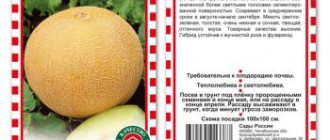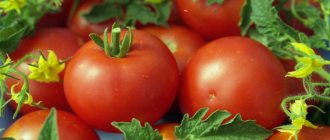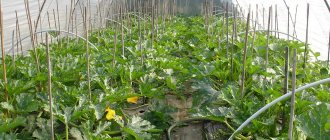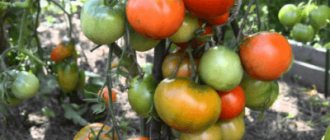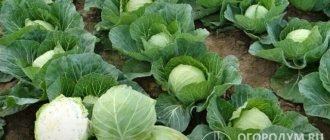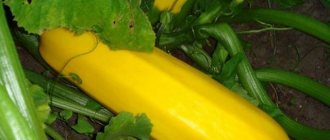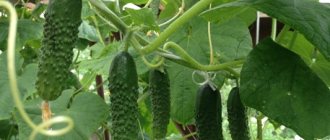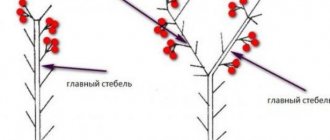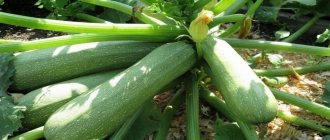Description of the melon variety Slavia
Melon Slavia is a climbing, late-ripening variety. The period from the emergence of seedlings to the harvest of the first harvest is 90-110 days. The length of the main lash reaches 1.5-2 m.
Large, green, kidney-shaped
Yellow-green, round, without a pattern, smooth, with a coarse mesh
Medium thickness, white when cut
White, dense, juicy
Oval, medium size, cream color
Melon Slavia has a rich sweet taste and a fresh, pronounced melon aroma. This variety holds the record for sugar content in fruits. The sugar content is 8.8%.
Pros and cons of the variety
Advantages of Slavia melon:
- endurance;
- drought resistance;
- resistance to diseases and pests;
- good transportability;
- keeping quality.
Among the disadvantages of the variety, one can note only difficulties with cultivation. Not every region has time to fully ripen the fruits. In cooler climates, frostbite may occur in melons. When grown indoors (greenhouses), Slavia melon lacks sunlight and heat.
Harvesting and application
The Slavia harvest is harvested in late August and early September . When separating the fruits from the bushes, a stalk 5 cm long is left. Ripe melons are consumed fresh; they can only be stored for about a week. After picking, the fruits are wiped with a dry cloth and stored in a cool and dark place.
Melon is used to make jam , jams and preserves. The pulp is dried and candied fruits are prepared for the winter. Melon is actively used for the production of muffins, cakes and other confectionery products. The aromatic and sweet pulp saturates them with a honey taste.
Growing melon Slavia
Slavia melon can be grown either by open sowing in the ground or by seedlings.
Preparing seedlings
You can speed up the harvest by growing Slavia melon in seedlings. Preparing seedlings begins with sowing seeds. It is recommended to use separate containers - plastic cups or peat pots pre-filled with soil mixture.
The optimal sowing time is mid-April. The seeds are sown to a depth of 2.5-3 cm, laying them on their side. The temperature required for germination is + 23 °C, after germination it is reduced to + 21 °C. It is important to provide the seedlings with good lighting at least 12 hours a day. Seedlings are planted in open ground when they reach the age of 25-35 days.
Selection and preparation of a landing site
The correct choice of planting site is the key to a good harvest. Melon is a heat-loving plant, so the beds with crops should be located on the sunny side - south or southwest. The site should be quiet, protected from strong winds.
You can, for example, plant corn and sunflowers in 2 rows around the perimeter of the plot. You can also plant melon in the rows of young gardens.
No less important is the choice of predecessor. The Slavia melon will grow best after the following agricultural crops:
- beans;
- corn;
- cabbage;
- potatoes (early);
- winter wheat;
- perennial herbs.
You should not grow Slavia melon in one place for more than two years, as this can lead to a decrease in yield. You can resume growing melon in the same bed after 5 years.
Landing rules
Sowing melon seeds in unprotected soil is carried out at different times, depending on the growing region:
- in the forest-steppe zone - from May 5 to May 15;
- in the steppe - late April or mid-May;
- in the western regions (the northernmost) - from May 20 to 31.
Seedlings are planted a little later, when the threat of night spring frosts has passed - approximately in the month of May.
Watering and fertilizing
Watering is important for melons from the moment shoots emerge until fruit sets, since during this period its root system does not have time to deepen. Watering should be done moderately but regularly, and always with warm water. It is recommended to carry out about 5 waterings per week, at the rate of 45 liters per 1 m2. 1 month before harvesting the first harvest of Slavia melons, stop watering.
The first fertilizing (with mullein or ammonium nitrate) is recommended 14 days after planting. The second and subsequent fertilizing is carried out using a mixture of fertilizers. For example, this solution (per 10 liters of water):
- superphosphate – 40 g;
- ammonium sulfate – 25-30 g;
- potassium salt – 15-20 g.
Formation
Proper formation of the Slavia melon bush and regulation of the number of ovaries on it is the main secret to obtaining a high yield. It is necessary to resort to this technique in order to reduce the ripening period and obtain large-sized fruits. The timing of formation depends on growing conditions and climate. This operation is carried out depending on the phase of plant development.
Female flowers of the Slavia melon are formed mainly on the side shoots, so the formation of the bush begins with pinching the main stem. The top of the shoot is broken off after 3-4 leaves, thereby removing the growth point. After this, lateral shoots - second-order shoots - begin to grow from the leaf axils. Good fruiting is ensured by leaving 2-3 shoots and no more than 6 fruits on one bush. You should focus on the growth rate of the plant.
Caring for melons in open ground
Further care for the crop sown with seeds and planted seedlings is almost the same and consists, at a minimum, of loosening, which is carried out only until the rows close in the first month to 15 cm, and then reduced to 8 cm. The soil is loosened only in the rows. During the lateral loop phase, the melons are carefully hilled. When the leaves close, no soil work is carried out.
Melon feeding
Usually 2-3 feedings are carried out until the leaves close (to avoid fruit spoiling). The first feeding with kemira, crystallon, ammonium nitrate is carried out a week after mass germination. In the budding phase, fertilizing is carried out with a solution of organic fertilizers, which are diluted 1:10-15. The last feeding is timed to coincide with the growth phase of the melon ovaries (about 3 weeks from the previous feeding). It is performed with a solution of phosphorus-potassium fertilizers, 50 and 20 g per bucket of warm water.
Melon. Carol
Pinching a melon
To get a full harvest, it is necessary to limit the development of the vegetative mass of the bush. To do this, pinching the melon shoots is carried out. On the bush, the main vine of the varieties is pinched again and 2-3 lateral ones are left. In hybrids, the main lash is not pinched, since the female flowers are located on it, and the lateral ones are pinched at the level of the second pair of leaves. Growing melon with large fruits requires removing part of the fruit ovaries. For 1 bush they are left (depending on the growth of the lashes) from 2 to 6 pieces. To avoid rotting of the fruits, pieces of roofing material and other material are used as a substrate.
Watering
Melon does not tolerate high humidity, so watering is carried out when the soil dries 3-4 fingers or 5-6 cm with heated (+20..+25°) water. Sprinkler irrigation is not used. Only through irrigation ditches. As the ovaries begin to grow, the watering rate is reduced and stopped completely by the ripening phase. This approach will allow the melon to accumulate more sugars. If watering exceeds the permissible level, the fruits turn out tasteless and many rot on the root, and the root system itself is susceptible to fungal diseases.
When does the Slavia melon ripen?
Melon Slavia is a late-ripening variety that has a long harvest period (90-110 days). The first fruits begin to ripen in August, but sometimes you have to wait until September for the harvest. These terms depend on many factors. And from the climate zone in which Slavia is grown, and from the care for it, and, in particular, from how high-quality and complete it was.
Harvesting
Harvesting begins from the moment the fruits reach full maturity. You can harvest the first fruits 2-2.5 months after planting and until the beginning of October.
The ripeness of the Slavia melon can be determined by the following parameters:
- Aroma. In ripe fruits it is bright - honey, vanilla or pear. Overripe ones do not smell very pleasant. Green ones either do not emit aroma at all, or it is slightly perceptible.
- Sound. When you tap on the sides of a ripe melon, a dull sound will be heard, while for unripe fruits it will be ringing.
- Color. The color of the fruit should be uniform – yellow-green. The network of cracks should be moderately expressed, covering about ½ of the fruit.
When harvesting, ripe melons of the Slavia variety are separated from the vines, leaving a stalk approximately 5 cm long. Sorted by size and degree of ripeness, removing damaged fruits. For gradual and uniform ripening, melons are stored in groups of uniform ripeness. From 1 hectare of planting area you can collect 18-25 tons of marketable fruits.
How to choose fruits when purchasing
Melons of the Slavia variety are found both in chain stores and in markets. It is recommended to purchase them at the end of August or September - during this period Slavia begins to ripen and reaches its highest levels of juiciness and ripeness.
When choosing, pay attention to the following :
- The melon must be whole, without cracks or dents. Otherwise, there is a high probability that the fruit inside is rotten.
- A ripe harvest emits a pleasant honey aroma. Lack of smell or too strong aroma indicates that the melon is of poor quality.
- There should be a dull sound when tapped.
- A ripe melon should be firm and have a hard skin. Soft or too thick peel are signs of an overripe or underripe fruit.
- The place where the melon was stored. It is not recommended to purchase fruits that have been lying on the ground.
Read about other varieties of melon:
The best melon seeds - a description of the varieties and varieties of the plant
Melon is a fragrant fruit native to Central and Asia Minor. There is much disagreement about whether melon actually is a vegetable, a fruit, or a berry. In a botanical sense, the sweet “sunny” gifts of nature are representatives of the Pumpkin family and belong to the Cucumber genus. Cucumber is considered a vegetable, but there is no clear answer about melon.
The thing is that scientists classify fruits according to one characteristics, but in cooking and trade - according to completely different parameters. Adding to the confusion is the fact that the concept of “fruit” does not exist at all in science; this term is used in everyday life. Most often, melon is called either a “false berry” or a “dessert vegetable.”
Diseases and pests
Altai melon gets sick often; its main enemies are powdery growth, copperhead and fusarium. The presence of these diseases can be recognized by the appearance of spots of various shades on the leaves; the plant begins to dry out and wither.
To prevent the Altai melon from dying from pest attacks, gardeners use the method of alternate planting of crops, and also try to prevent the occurrence of diseases by taking preventive measures.
The most important prevention includes pre-sowing soaking of seeds in a saline or manganese solution. As for insects, you should be wary of spider mites, aphids and tobacco thrips
To combat them, modern substances are used: Maxi, Fitover and Kemofox.
Useful properties of melon
The healing and beneficial properties of the Asian “false berry” have long been used for the treatment and prevention of many diseases.
Low calorie content makes it an enjoyable part of the diet menu.
A slagged body simply needs the aromatic melon pulp. It very effectively cleanses the gastrointestinal tract of toxins.
The vitamins contained in the sunny fruit prevent rapid skin aging. In addition, a person’s appearance improves: hair acquires a healthy shine, nails become stronger, skin becomes smooth and elastic.
Amber dessert is also useful for strengthening the immune system, so resistance to disease increases sharply.
The Asian fruit has a positive effect on eye health and reduces the risk of developing ophthalmological diseases.
Potassium is one of the most important components included in melon pulp in quite large quantities (267 mg), lowers blood pressure and improves the functioning of the nervous system.
Melon helps fight joint disorders. It prevents the development of diseases such as osteoporosis and arthritis.
A very useful product for the cardiovascular system. Regular consumption of juicy fruits reduces the likelihood of heart attack, atherosclerosis and stroke.
The diuretic properties of melon improve the functioning of the kidneys and bladder.
Choosing the right variety
The choice of planting material is one of the most important stages in cultivating melon.
After all, half the success depends on how correctly the variety is selected. The first thing to consider is whether this type of melon is suitable for the climatic conditions of a particular region. In Russia, only the southern part of the territory can boast of warm and sunny summers. In Siberia, the central regions, the northwestern parts of Russia, and the Urals, nature is not so welcoming, summers are cool, and daylight hours are shorter.
Therefore, when choosing the best melon seeds, for example, for Siberia, you need to pay attention to when planting seedlings is more successful, as well as to the recommended growing regions. For the central and northwestern regions of Russia, early varieties of melon are better suited, because they will grow faster and form fruits in such conditions. Middle and late varieties may not have time to produce a harvest, since their growing season takes longer.
Also, when purchasing seeds, you should pay attention to the growing conditions and information on how to plant. On the packaging, manufacturers usually indicate where it is better to grow the variety: in a “garden under a roof” or in open areas.
Pests and diseases
The melon variety Slavia does not like sudden temperature fluctuations, cool and rainy weather. High humidity leads to the development of fungal diseases if the plants are weakened by improper care and lack of fertilizing.
Common diseases:
- downy and true powdery mildew - whitish coating on the leaves;
- copperhead or anthracnose - brown spots on the plant that over time turn into through holes;
- fusarium wilt - rapid drying out of the aboveground part due to damage to the roots by a pathogenic fungus.
A solution of Bordeaux mixture or a systemic fungicide helps in the fight against powdery mildew and anthracnose.
Important! In case of fusarium, it is better to immediately dig up and burn diseased plants. Spray the soil where they grew with a fungicide. Various pests can easily settle on melons weakened by diseases:
Various pests can easily settle on melons weakened by diseases:
- spider mite;
- moth caterpillars;
- melon aphid;
- melon fly.
Fitoverm is used in the fight against ticks and insects. This natural insectoacaricide does not cause harm to human health, but is quickly washed off by rain, so after the first time, re-treatment is carried out after 5 days.
Varieties and varieties of melon
Today, a huge number of varieties and varieties of melons have been bred: early, medium, late, elongated and round, flattened and elliptical-like.
Based on external characteristics, melons are usually divided into the following varieties:
The surface of such melons is covered with ribs. Medium-sized fruits with orange flesh. They tolerate transportation well, but are not suitable for long-term storage. The name was given in honor of the estate of the Pope, where they first began to grow the crop. The dessert vegetable was given as a gift in the 15th century to the head of the Catholic Church. Thus, the juicy Cantaloupe melon migrated from Turkey to Europe. Approving reviews of the yellow Cantaloupe melon once again prove the correctness of the pontiff’s choice. In addition to the unusually tasty pulp, this dessert is extremely healthy. After all, only this variety of melon contains carotene, and its low calorie content allows it to be consumed during a diet.
Cantaloupe.- Net melon. From the name it is clear that the surface of the fruit is covered with a mesh pattern. As a rule, this type of melon is shaped like a round ball. Inside there is juicy pulp of white, orange or green color.
- Smooth-skinned melon. The most famous and beloved variety. Hidden under the thin crust of the fruit is juicy, incredibly sweet and sugary pulp.
- Serpentine melon. This plant variety looks exotic in the garden. In shape, color and smell when unripe, it resembles a cucumber, which is why it is often called the Armenian cucumber. Having reached full ripeness, the fruits are saturated with the aroma of melon, and the color becomes yellow. Sometimes the fruits begin to squirm, hence the name. Snake melon is a very fertile crop. The plant is a super early plant; it begins to bear fruit on the 70-80th day. The harvest is stable, right up to the first autumn frosts. From one melon-cucumber bush you can get up to 10 kilograms of harvest.
Golden
The smooth-skinned varieties include the Golden melon with medium harvest dates. The fruits ripen on the 80th day after the seedlings begin to emerge. The variety is fertile, tolerates low temperatures and diseases, and is suitable for transportation over long distances. The fruits are medium in size, the average weight of one “golden” melon is one and a half kilograms. The shape is spherical or slightly oval, the color is amber yellow. The pulp is soft, white, sweet. The disadvantage of this variety is its intolerance to high air humidity, as well as to dry soil.
Many reviews of Golden melon speak of the unsurpassed honey taste and pleasant aroma of sunny melon. Some comments indicate that without a “garden under glass”, growing a plant outdoors, it is difficult to achieve a good harvest. Feedback about the Zolotistaya variety has one thing in common - a beautiful and radiant color, high taste and extraordinary aroma.
Scythian Gold
The melon Zlato Skifov also forms a harvest in a short time. The growing season for this variety is short - 70-80 days. The fruits are round, small in size (1.2 – 1.4 kg), “dressed” in the finest mesh on top. The yellow flesh has an excellent aroma and taste. Some reviews of the Zlato Skifov melon indicate that representatives of the variety love warmth and light, as well as soil enriched with organic matter. To get good results, it is necessary to provide the plant with good lighting, comfortable temperature and fertile soil.
One of the early ripening varieties, Dune melon, reaches ripeness on the 60-75th day after the start of the growing season. The shape of the fruit is ellipsoidal, the color is yellow. A dense mesh “covers” the crust on top. Inside the pulp is beige, sweet, juicy, crumbly, with a pleasant smell. The average weight of one fruit is 1.5 kilograms. Transportability indicators are high (fruits do not crack during transportation). Numerous positive reviews about Dune melon are associated with the excellent taste of the variety and high yields.
Extraordinary
On the Internet you can often find reviews about the Unusual melon as an original fruit, either a pumpkin or a melon. Indeed, the round, flattened melon, covered with a soft yellow rind and divided into sections, vaguely resembles its distant relative, the pumpkin. The bright orange flesh is also similar to pumpkin. But the Unusual variety is a real melon. The fruits are large, the average weight of each reaches three to three and a half kilograms. The aroma is not as pronounced as other varieties, but the flesh is refreshing, sweetish, grainy and tender.
Mostly reviews about Oksana F1 melon are positive. This is explained by the fact that the variety is intended for long-term storage. Og is valued for its high yields, as well as for its resistance to common crop diseases: powdery mildew, the appearance of necrotic spots, fusarium. Refers to plants with medium-early fruit ripening. The growing season lasts about sixty days. Melons grow large, yellow-orange, the average weight of one fruit is approximately six kilograms. The pulp is compacted, snow-white, sweet. The shape of the dessert vegetable is oval, the crust is “painted” with a mesh pattern.
Read also: Red pepper and paprika: the same thing?
Approving reviews of the Gerda F1 melon confirm the incredible early maturity of the variety. Due to the fact that the first melons will appear on the eightieth day after mass germination of seedlings, the plant is considered one of the best for growing in the northern regions (in “warm gardens” - greenhouses). It is also suitable for harsh climates because it responds quite well to short daylight hours. The fruits are small (1.5-2 kg), light yellow, with a mesh on the rind. The pulp is beige in color, tender, with a pleasant taste and smell.
Late-ripening Slavia melon is well suited for growing in both indoor and outdoor gardens. The round, yellowish-green fruits are simply streaked with a thick, pronounced mesh. The pulp is white, tight, juicy and sweet. Slavia is a large-fruited variety, the weight of one melon reaches three kilograms. The variety is very hardy: it “resists” diseases well, is not afraid of drought, and is suitable for long-term transportation. To prevent the fruits from coming into contact with the ground and rotting, it is advisable to lay a water-repellent flooring under the vines.
The successor to everyone's favorite variety Kolkhoznitsa, the Roksolana melon has become a worthy replacement for it. The variety is a mid-early hybrid plant that produces a harvest on the sixtieth to seventieth day after the start of growth. The bright yellow fruit is covered with a glossy crust, cut here and there by an openwork mesh. The melons grow small, one and a half kilograms, with creamy beige flesh. The taste of the variety is very high: sweet, soft and unusually aromatic melon. Despite the delicate structure and thin crust, the fruits of the variety are suitable for transportation. The positive qualities include the fact that the variety does not present unexpected “surprises” and bears fruit consistently. Having planted the Roksolana melon, you can be sure that at the end of summer, “sunny balls” will definitely ripen in the garden bed. Growing without greenhouses is possible in the Lower Volga region; in cooler regions it is better to plant Roksolan melons under cover.
The melon variety Lakomka is a mid-early variety; the fruits are ready for consumption on the seventieth to eightieth day after the first green leaves appear on the soil surface. Praiseworthy reviews of the Gourmand melon can be found on many forums. It says that the variety is resistant to many troubles that can befall a garden crop: sudden changes in temperature, diseases, “injuries” during transportation.
The fruits of the plant are round in shape, greenish-yellow in color, cut into a mesh “ornament”. The pulp is greenish-beige, tender and juicy in taste. Gourmand weighs two or two kilograms, some specimens reach almost three kilograms.
If the Kolkhoznitsa variety can be considered a European crop, then the Torpedo melon is an Uzbek delicacy. In Uzbekistan, it is better known under the name Mirzachulskaya. This melon cannot be confused with anything else. Long, like a projectile, it really resembles a torpedo. The yellow crust is braided with “fine lace” made of dense mesh. The pulp is very juicy, with a pleasant aroma and sweet taste. Torpedo is a large-fruited melon; in its historical homeland it reaches large sizes and can weigh about fifteen kilograms. In the temperate climate of Russia it is difficult to grow such a melon weighing more than five kilograms.
Speaking about the agricultural technology of the Torpedo variety, it should be noted that it is very heat-loving, therefore it is most often grown in “glazed gardens”. Another point that needs to be taken into account is that the late variety is not suitable for all regions. To grow such a southern plant will require a lot of patience and work. The plant is climbing, with powerful shoots reaching two meters in height. Therefore, there is no way to do without trellises on which the plant will rest.
This Asian plant with bright, yellow, sweet and juicy fruits is loved by people in all countries. The juicy, sunny fruits not only become a fragrant dessert, but also help cope with many diseases. The vitamins included in its composition make the “dessert vegetable” a healthy product that should be present on tables in the autumn. There are many varieties of melons, for example, there are also some that were not discussed in the article: Vietnamese, Ethiopian, Amal, Dakar, Raymond.
Growing rules
If the summer is short and cool, melons do not have time to produce a full harvest. However, you can collect delicious and aromatic Slavia melons in your garden in a temperate climate. This will require knowledge of agricultural technology and high-quality seeds. To speed up the process, seeds can be germinated by wrapping them in damp gauze for 3 days.
Description of growing Slavia melon seedlings:
- For seedlings, seeds are sown in small containers with a diameter of 10 cm. It is advisable to use peat pots, which can then simply be buried in the garden bed; melon does not like transplanting.
- Plant two seeds at a depth of about 2 cm in universal peat soil with neutral acidity. For 10 liters of soil mixture add 1 tbsp. ash.
- After sowing, the pots with seeds are covered with a transparent bag or glass to maintain 100% humidity.
- As soon as the shoots appear, the cover is removed and the seedlings are exposed to the light.
- One of the strongest plants is left in each pot.
- The first fertilizing with complex mineral fertilizers is carried out after the appearance of the first true leaf, and the second – two weeks later.
- Melon seedlings should not have leaves in contact with each other; the pots must be moved apart in time.
When the bushes grow, they begin to form side shoots; it is on them that the future harvest will ripen.
Recommended timing
Slavia melon seedlings cannot be kept in pots for longer than 30 days. Therefore, the date for sowing seeds for seedlings is calculated based on the climate in their region. By the time melon seedlings need to be planted in the ground, it should warm up to +18 °C.
The approximate dates for planting in open ground are the second and third ten days of May. Plants can be planted in the greenhouse two weeks earlier. In mid-May, Slavia melon seeds are planted in open ground only in the southern regions with warm autumns.
Comment! Seedlings are transplanted into the garden at the end of May, but this can be done earlier. When planting in the first ten days of May, each bush is given temporary protection from a cut-off plastic bottle or a spunbond shelter on a frame.
Site selection and soil preparation
It is recommended to place Slavia melon on a raised bed. The place should be well warmed by the sun and protected from cold winds. It is advisable to observe crop rotation and not plant Slavia melon immediately after other melons.
Areas with close groundwater, located in a lowland or depression, where there is no good air circulation and moisture accumulates after rains, are not suitable for cultivation. The Slavia melon needs loose and fertile soil, well permeable to moisture and air. When planting melons, experienced gardeners do not recommend applying organic fertilizers; this can subsequently lead to the development of fungal diseases and bacterial rot. It is better to add coarse sand and mineral complex fertilizers to heavy soil.
Landing rules
Slavia melon seedlings ready for transplanting into open ground should be strong, not elongated, with 3-4 leaves. The holes are dug at a distance of about 80 cm from one another. The soil is well soaked with warm water, and then melon seedlings are planted in peat cups. The wet soil around the bushes is immediately mulched with peat or dry grass. Mulch prevents the formation of dry crust on the surface of the earth, prevents the growth of weeds and the rapid evaporation of moisture.
Important! When growing in a temperate climate, you need to keep spunbond or film ready to cover the Slavia melon seedlings in case of a night cold snap. Seedlings withered by cold can easily die.
Description and characteristics of the main varieties of melon
Melon is an annual melon crop of the Cucurbitaceae family. The plant is distinguished by long creeping shoots. Depending on the place of cultivation and variety, one bush can produce 2–10 fruits weighing 1.5–10 kg. The fruit is a spherical or oblong false berry of yellow, green, sometimes brown and even white color with sweet aromatic pulp. The average ripening period is 2–4 months, but some late species can ripen up to 6 months.
The homeland of melon is the territory of Central and Central Asia. It is here that this melon crop has been traditionally grown for several centuries, and in these countries it is not just a dessert, but a staple food product. Some species of this crop originate from the tropics of Africa, China and India. It is believed that the sweetest and most aromatic fruits grow in the countries of Central Asia: Uzbekistan, Kazakhstan, Tajikistan, Turkmenistan.
The largest melons in this area are considered to be Uzbek melons - their weight can reach 25 kg. But this size is not a record. For example, the largest melon was once grown in the USA, and its weight exceeded 100 kg, but after that several more similar records were set in the world.
Melon was brought to Europe in the middle of the last century, and began to be actively cultivated only at the beginning of the 16th century. Now this southern crop is grown all over the world, and thanks to the intensive work of breeders, new varieties of melon are constantly being developed.
In addition to Central Asia, melon is cultivated for industrial purposes in the south of Ukraine. Gradually, its cultivation is moving to the northern regions of the Urals, Yakutia and even the Far East. In those regions where it is not possible to grow it in open ground, greenhouses and greenhouses are used.
In accordance with their geographical location, cultivated (table) varieties are classified into three main subspecies: Central Asian, Asia Minor, European, as well as exotic varieties.
There really are many exotic and unusual varieties in the world. For example, in China and the countries of North Africa, serpentine melons are common, externally the same color as cucumbers, but much longer - 40–100 cm. No less exotic is the banana melon, which is simply called “banana”. There are also fruits with a bizarre shape, for example, a variety with a very euphonious name “Sybarite’s Dream”, or very miniature melons called “mouse”.
Melon does not contain any allergens and can be given to young children. Of course, not for newborns, but babies from 8 months old can be given it as complementary food.
The sweet and juicy pulp is an excellent natural remedy for depression; it improves the functioning of all internal organs. You can use it not only fresh. A variety of desserts, salads, jams, marshmallows are prepared from it, baked and dried in the microwave. In any form, it is extremely healthy and tasty.
Melon variety Slavia: characteristics, appearance, regions and cultivation characteristics, photo
The melon variety Slavia will certainly appeal to all connoisseurs of the late-ripening fruits of this crop, because the plant is successfully grown both in open areas and in the closed ground of greenhouses, always bringing a tasty and juicy harvest. What specific varietal characteristics does this crop have and what is worth knowing about the features of its planting and further cultivation - read on.
History of variety selection and main growing regions
The melon variety Slavia was bred back in 1996 by breeders of the All-Russian Research Institute of Rice, Krasnadar. However, the new melon entered the State Register of Breeding Achievements of the Russian Federation only in 2002 and was zoned in the North Caucasus region. Today, the variety is successfully grown not only in Russia, but also in neighboring countries, consistently producing tasty and aromatic fruits.
Description and characteristics
Any characteristic of a fruit plant can be decisive in the situation of choosing one variety or another, therefore, when planning to plant Slavia melons on your plot, you should carefully study not only the external characteristics of the fruit, but also their taste, chemical composition and ripening time.
Appearance
Slavia is a late-ripening, climbing variety of melons. The length of the main shoot often reaches two meters, but the side shoots are slightly shorter. The leaf blades are green in color, relatively large and slightly dissected at the end. Flowering is slightly yellow, of medium abundance.
The fruits are round in shape, yellow-green in color, with a coarse, medium-coarse coating. The surface pattern of the peel is a continuous fine mesh, and in cross-section the skin is pure white and bends well. Inside there is a seed nest of medium size, loose, with three placentas located along the walls.
The flesh of the Slavia melon is medium thick, white, dense and juicy, with a natural melon aroma. The weight of one melon reaches 1 – 4 kg.
Taste and smell
The taste of melons of the described variety deserves the highest praise, since it perfectly combines high sweetness and aromatic aftertaste. Moreover, the taste and aroma of the harvested fruits retain their characteristics for a month after harvesting, withstanding transportation and long-term storage.
Important! In addition to the beneficial properties of melon, it is always worth considering the possibility of a negative effect of its components on human well-being. First of all, this applies to people suffering from gastrointestinal problems, which is why they will have to either exclude melon from their diet altogether, or consume it in limited quantities and separately from the main food.
Chemical composition
in Slavia fruits the dry matter reaches 8.1–10.0%, with a total sugar content of 7.9–8.6%. The calorie content of melons is average for the fruits of this crop and is approximately 33–35 kcal per 100 g of pulp. The ratio of BZHU (proteins/fats/carbohydrates) is 0.6 g/0.3 g/7.4 g, and as for the vitamin and mineral composition, first of all it is necessary to highlight the following components:
- vitamins A, C, E, D, H, K, group B;
- macroelements: calcium, potassium, magnesium, sodium, phosphorus, chlorine;
- trace elements: iron, iodine, copper, manganese, zinc, silicon.
Slavia melon contains small amounts of saturated fatty acids and polyunsaturated fatty acids, better known as Omega-3 and Omega-6. Like other varieties of melon, Slavia fruits have a significant beneficial effect on the human body, which is primarily expressed in:
- improving memory and fighting depression (folic acid is responsible for this);
- increasing the body’s immune strength when exposed to colds and viral illnesses (vitamin C);
- improving the condition of hair, skin and nails (silicon);
- increasing hemoglobin and successfully combating anemia (iron, which is much more in the pulp of fruits than in fish or milk).
Important! The chemical composition and caloric content of specific fruits are directly affected by the conditions of their cultivation and the use of nutrients, therefore all given values are averaged.
In addition, do not underestimate the role of magnesium present in melon, because it has a positive effect on the state of the cardiovascular system and is indispensable for the heart muscle.
Ripening time
From the appearance of the first shoots to the ripeness of the fruits of the described variety, on average, at least 82–111 days pass. That is, about three months after sowing the seeds, you will already be able to harvest the melons (starting in mid-September and continuing until October). With proper care, about 200–300 centners of universal-purpose fruits are obtained from one hectare.
Advantages and disadvantages
- The list of advantages of the plant includes the following features:
- endurance and ease of care;
- good indicators of drought and disease resistance;
- high taste and commercial qualities of fruits;
- good keeping quality and excellent transportability of the harvested crop.
As for the shortcomings, the most noticeable of them will be the late ripening of melons, which is why they do not have time to ripen in all regions.
When grown in open ground in the northern regions of the Russian Federation, frostbite of melons is often observed, and when cultivated in greenhouse conditions, the plants often suffer from a lack of sunlight and heat (if we are talking about unheated shelters).
We recommend that you familiarize yourself with other varieties of melon:
How to choose a ripe melon when buying
When choosing fruits, they always focus more on their appearance, forgetting to pay attention to such characteristics as the aroma and “sound” of the selected specimen. Of course, uniform color, absence of signs of rotting and mechanical damage are important signs of quality, but not the only ones, therefore, when planning to purchase this or that fruit, pay attention to:
- aroma (in high-quality melons it is always sweet and clearly noticeable);
- skin density (it should be moderately elastic and not give in to dents);
- sound from patting (in ripe fruits it is always dull).
Only by assessing all these criteria together can we talk about the quality of the melon and its optimal ripeness
Agrotechnics of cultivation
Growing Slavia melon begins with choosing a suitable growing location for it, but in order to get an abundant and high-quality harvest of melons, it is also important to organize proper care for the plant. Each action has its own characteristics, most of which are related to the requirements of the variety.
Dates and place of landing
The timing of planting Slavia melon depends on the growing region and the type of planting. So, when sowing seeds for seedlings, it will be possible to transplant the grown seedlings into the garden bed no earlier than the end of May.
The optimal time for home sowing is mid-April, maintaining the room temperature at +23°C and sufficient lighting for 12 hours. As soon as the first shoots appear, the temperature can be lowered to +21°C, and after 25–35 days it can be transplanted to an open bed.
If you are going to sow seeds directly into open soil, then it is worth considering the most suitable time for different growing regions:
- for the forest-steppe zone - May 5–15;
- for the steppe - late April or mid-May;
- for western territories (including northern ones) - May 20–June 5.
Learn how to grow melon from seeds at home.
Since the climatic features of a particular region are different and it is difficult to guess the exact calendar date for sowing seeds, it is wiser to focus on the ambient temperature: as soon as the threat of return frosts has passed, the air will warm up to a comfortable for melon +16°C, and the soil temperature will rise to +12 °C - you can safely begin the task by choosing in advance a sunny and sheltered area from the cold wind in the southern or southwestern territory. Good predecessors for Slavia will be beans, corn, cabbage, winter crops, perennial herbs and potatoes, but melons themselves It is better not to plant in the same place for two years in a row.
Sowing pattern and depth
Plants of the Slavia variety can be sown in the same way as other varieties, having first dug up and leveled the area. The planting pattern is 70×100 (the distance between adjacent holes and rows), and no more than three seeds should be placed in one hole. The seeds are deepened into the soil by 2.5–3 cm, laid on their sides, after which the soil is compacted and the plantings are watered abundantly.
Melon care
Caring for the Slavia melon begins soon after it is planted on the site and involves timely moistening of the soil, fertilizing the crop and loosening the soil, while simultaneously removing weeds. In regions with more severe climatic conditions, planted melons may need temporary protection from the cold, the methods of organizing which you also need to know.
Source: https://fermer.blog/bok/ogorod/dynya/sorta-dyni/6510-dynja-slavija.html
Central Asian varieties
More than 160 types of melons are cultivated in the countries of Central Asia, which are known all over the world. The best and most delicious fruits are grown here, and the variety of their shapes, colors and tastes is simply amazing. Among them there are both early summer and late-ripening varieties that ripen in the fall - they are called winter because they persist almost until spring.
Read also: Juniperus virginiana - description of varieties Gray Owl, Hetz, Blue Yarrow, Moonglow, Skyrocket, planting and care, video
The most popular Central Asian cultural representatives are:
- Kassaba. A winter variety that is harvested in late autumn while still green. Subsequent ripening of the crop occurs under canopies in a suspended form.
- Gulyabi. This Turkmen variety is well known throughout the world. Ripens by the end of summer, is well transported and stored all winter. The fruits are ovoid, large (3–6 kg). The pulp is white, quite dense, but juicy and very sweet.
- Chogary (Bukharka). This is the most popular variety in Central Asia. Large (up to 6 kg) fruits are oval, pointed on one side, and have a dense skin. The pulp is white, very sweet.
- Ich-Kzyl, known throughout the world as Pineapple. Mid-season variety, ripening in Central Asia by the end of August. The fruits are oval, medium size (2-4 kg), yellow peel, covered with a patterned mesh. The pulp is white, very juicy with a characteristic aroma and flavor of pineapple.
- Ribbed. An early-ripening Uzbek hybrid with a characteristic ribbed surface. At home it ripens in mid-summer, and in the conditions of Central Russia by the end of August. The fruits are similar in appearance to pumpkin, the peel is yellow, rough, the flesh is very tender, sweet and aromatic.
- Torpedo. The most popular Uzbek variety in Central Asia and world famous. The fruits are large, elongated, slightly pointed at the edges. The peel is light yellow, rough, covered with a mesh. The pulp is white, juicy, oily. Transports well and is stored for a long time.
European varieties
About 80 varieties are grown in Europe, specially zoned for temperate and northern climates. They are distinguished by their small size (up to 2–2.5 kg), round shape, and fairly sweet taste. These are predominantly summer, early-ripening or mid-ripening species.
The fruits of European hybrids are poorly transported and spoil quickly, so they are immediately consumed. A variety of dishes are prepared from them, baked, and sometimes dried. It should be said that such fruits are very convenient to cook in the microwave, since practically no juice flows out of them.
In Europe, the following varieties of melon are considered the most popular:
- Melon Gold of the Scythians. Mid-season (70–80 days) hybrid with small (1.5–2 kg) round fruits. The peel is golden yellow, almost orange, slightly rough. The pulp is white, very juicy, slightly oily. The variety is highly resistant to diseases and frost-resistant.
- The dream of a sybarite, or in other words, the dream of a lazy person. A very early variety that reaches technical ripeness in 50-55 days. The Sybarite's Dream is distinguished by small (300–500 g) fruits with an original elongated shape and green striped skin. The pulp of the melon Sybarite's Dream is white, very juicy and crispy, with a specific honey aroma and taste. Sybarite's Dream is considered a high-yielding variety - 15–20 fruits ripen on the bush per season.
- Melon Slavia. Hybrid of medium late (90–110 days) ripening period. The fruits are medium-sized (1.5–4 kg), spherical, the peel is yellow-green, almost brown, covered with a coarse patterned mesh. The pulp is white, thick and dense, quite juicy, sweet and aromatic. The variety is high-yielding, resistant to drought, cold and disease, and transports well.
- Melon Dune. A relatively new variety of early ripening (55–70 days). The fruits are oval, the yellow peel is covered with a continuous mesh. Fruit weight is 2–3.5 kg. The pulp is creamy, tender, very juicy with a pronounced aroma.
- Melon Dubovka. Mid-season variety with small (0.8–2 kg) oblong fruits. The peel is thin, golden-greenish in color, partially covered with mesh. The flesh is creamy, dense, slightly crunchy, very sweet and aromatic. The variety is resistant to bacteriosis and drought.
- Titovka. Early (60–70 days) variety with round, small (1.5–2 kg) fruits. The peel is yellow, smooth, partially covered with mesh. The pulp is white, fibrous, juicy, and tastes sweet. Titovka is often grown in fields on an industrial scale, as it is well adapted to cold and disease.
- Melon Raymond. Magnificent early ripening hybrid of pineapple type. The fruits are large in size (6–10 kg), similar in appearance to the well-known Torpedo. The peel is thin, yellow, completely covered with mesh. The pulp is creamy, very sweet (13% sugar), incredibly juicy, with a characteristic honey aroma.
- Melon Roksolana F1. An early ripening (65–70 days) hybrid with round, sometimes elongated fruits weighing up to 2.5 kg. The thin golden peel is covered with a small mesh. The pulp is creamy, very tender, slightly oily, sweet.
- Melon Sweet miracle. Very high-yielding mid-season (80–95 days) hybrid. The fruits are round, medium-sized (up to 3 kg), the peel is yellow, mesh. The Sweet Miracle melon has an incredible taste - its light cream flesh is very sweet, with a pronounced honey tint. The variety is resistant to cold, fungal diseases, and transports well.
- Delano. An early ripening (53–55 days) hybrid of the pineapple type. The fruit weight of the Delano variety reaches 3–4 kg. The fruits are elongated, with a mesh skin of intense yellow color. The Delano hybrid has an unsurpassed honey-pineapple aroma. The pulp of the fruit is very sweet, orange, almost red in color.
- Kalmychka. An early variety, often cultivated in fields. The fruits have a rough, slightly ribbed skin. The pulp is juicy, sweet and very meaty. The crop is unpretentious, with proper care it produces high yields and is well transported.
- Dakar. An early ripening hybrid of the pineapple type, bred relatively recently. The fruits are oval, weighing 3–5 kg. The peel is bright yellow, covered with a mesh. The pulp of Dakar is sweet, oily, with a characteristic pineapple flavor and aroma.
The best early ripening varieties intended for the relatively stable European climate have now been listed.
Exotic melons
There are many exotic and unusual varieties in the world. All of them are predominantly early, as they grow in southern or tropical climates. We will talk about the most popular of them next.
Banana variety
The description of the Banana variety is somewhat similar to the fruit of the same name. Banana melon is just as long, but its skin is light green. The banana hybrid (banana melon) was bred in the USA and has been cultivated there since 1885. The Banana variety is a late variety - banana melon ripens in 90 days.
In the West, the Banana hybrid is very popular. In good conditions, the Banana variety grows to a decent size: 35–80 cm in length and 8–15 cm in diameter. Banana melon tastes a little like the fruit - the pulp of the Banana variety is just as soft, tender and oily. In addition, banana melon has a characteristic aroma that is reminiscent of a real banana.
However, there is one significant difference - the color of the Banana variety is not at all similar to the fruit. The inside of the banana melon is golden, almost red, with a greenish edge under the skin. Banana melon is considered the most unusual not only in its homeland, but throughout the world.
Vietnamese striped melon
These are miniature fruits of yellow-brown color, the creamy pulp of which has a delicious pineapple taste.
Mexican gherkin (mouse melon)
A miniature hybrid with green striped skin that looks like a tiny watermelon. The pulp of these fruits is also green and slightly watery with a sour taste.
Of course, these are not all exotic names. Seeds of a wide variety of exotic hybrids are now available in gardening stores. But you must remember that they can only be grown in a greenhouse.
